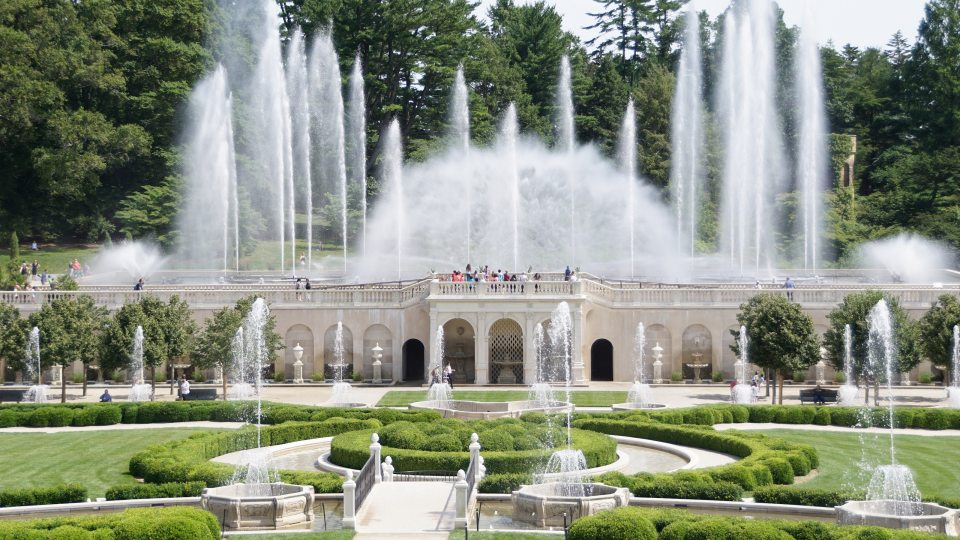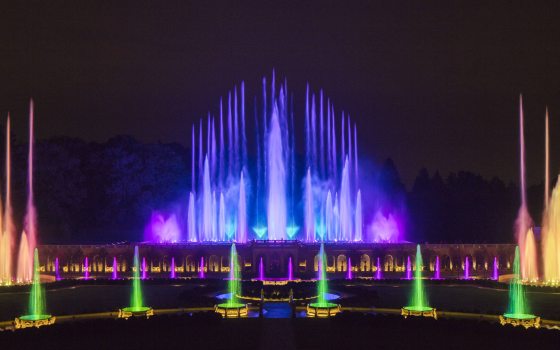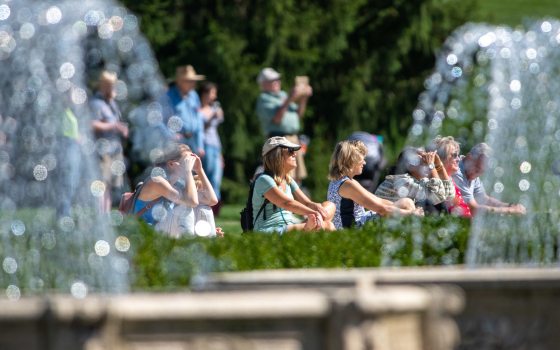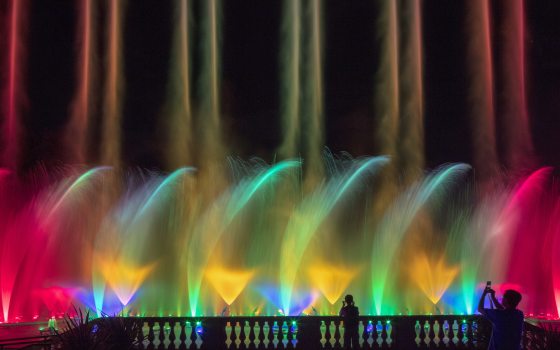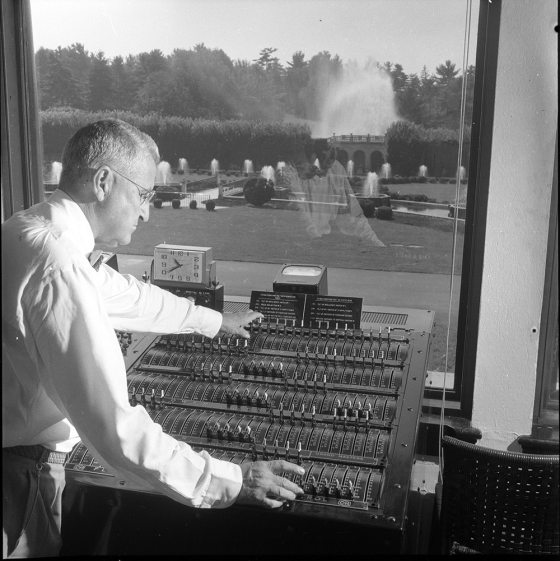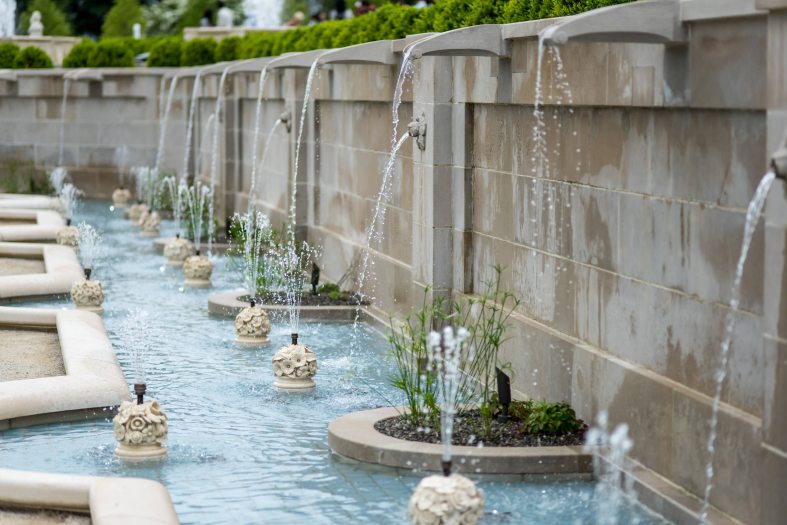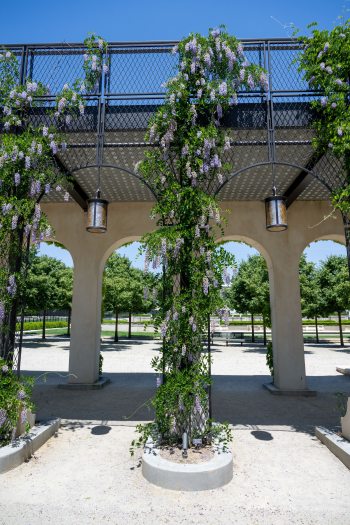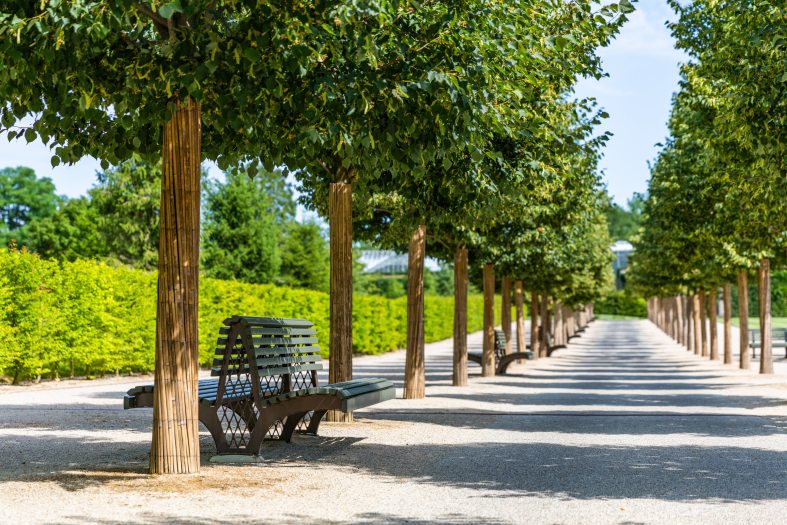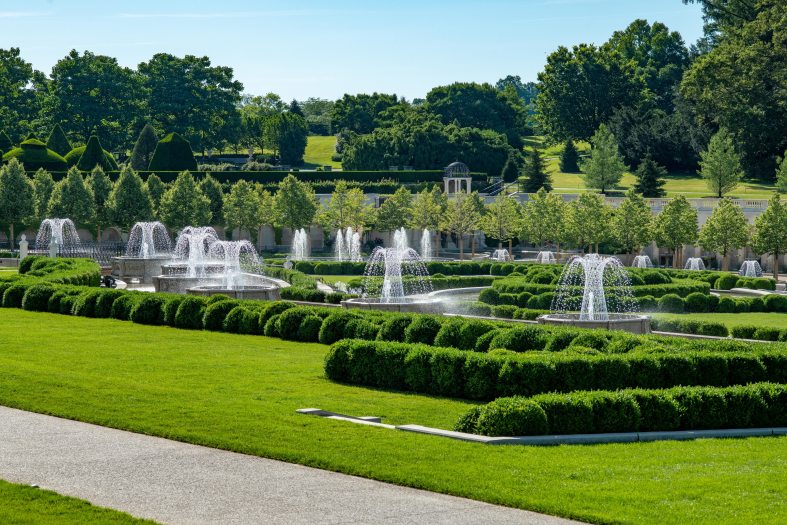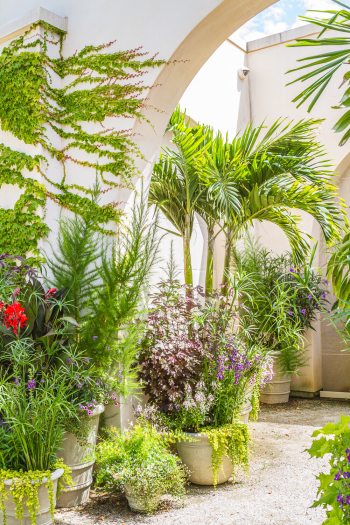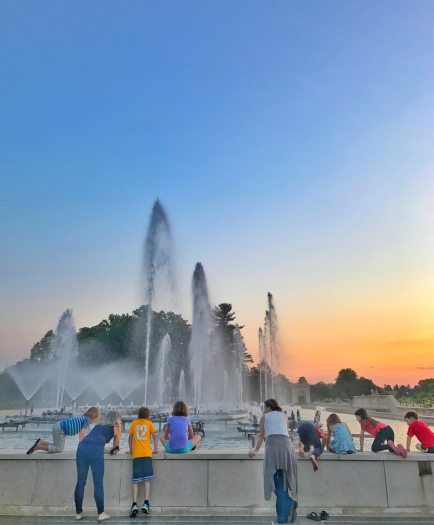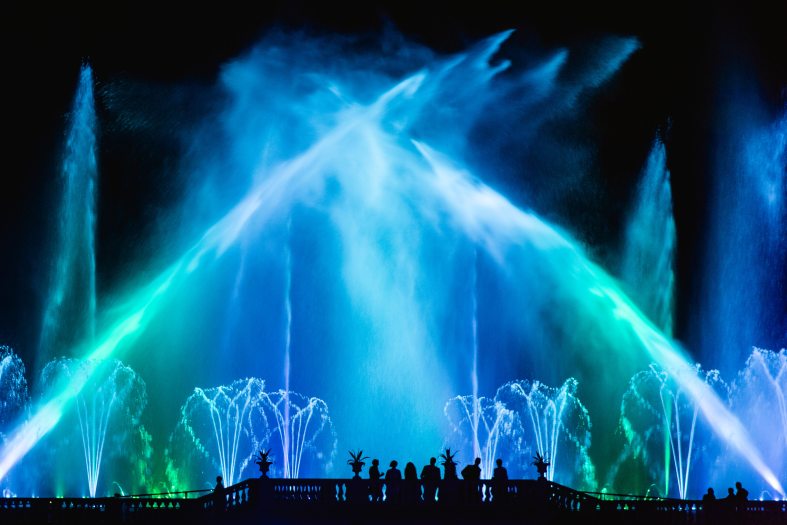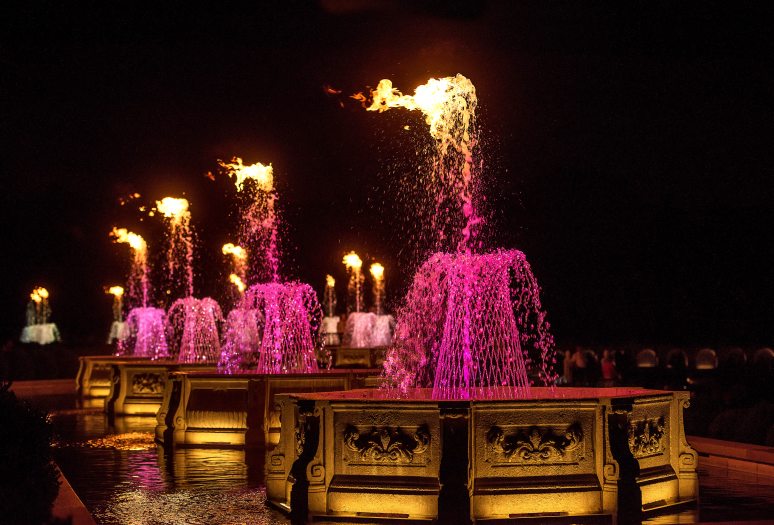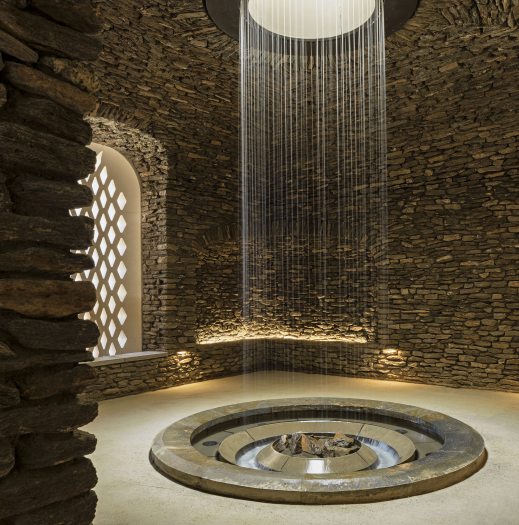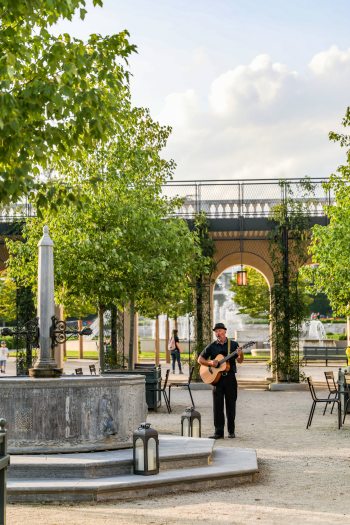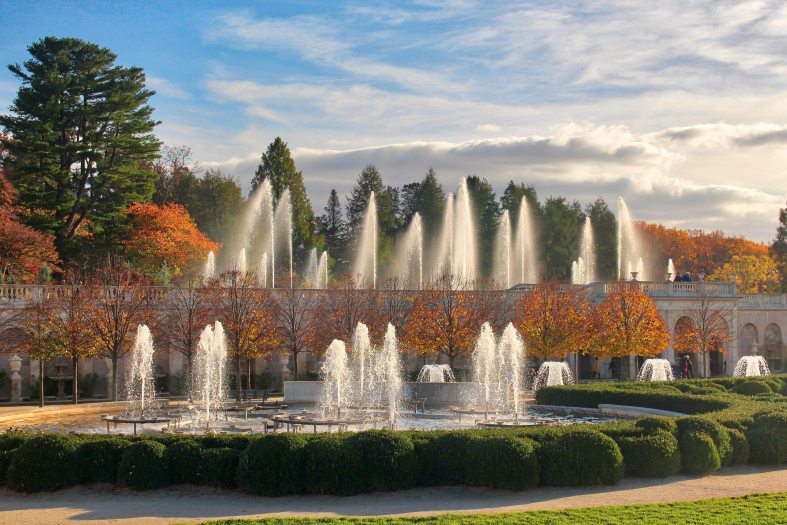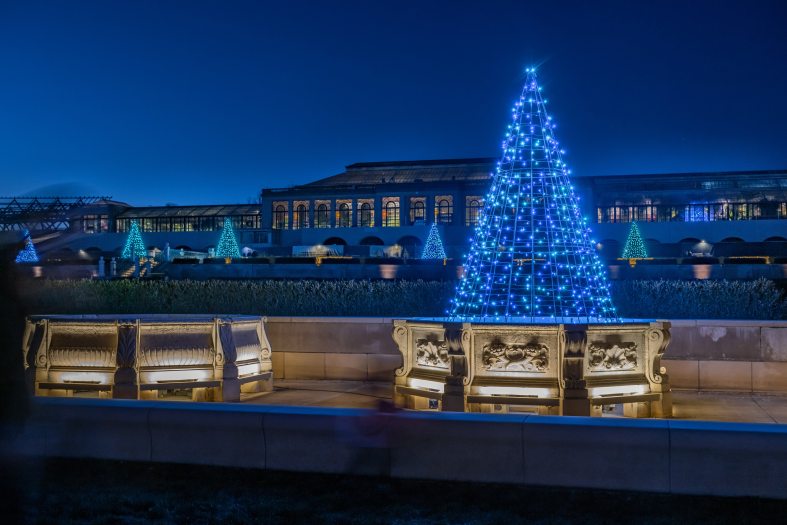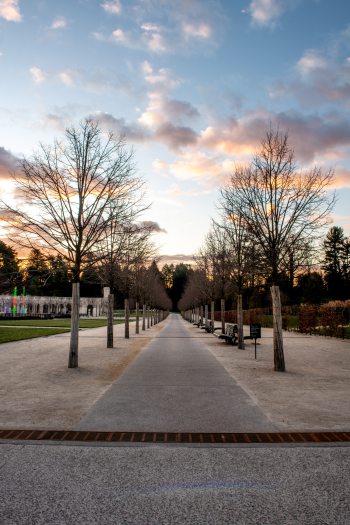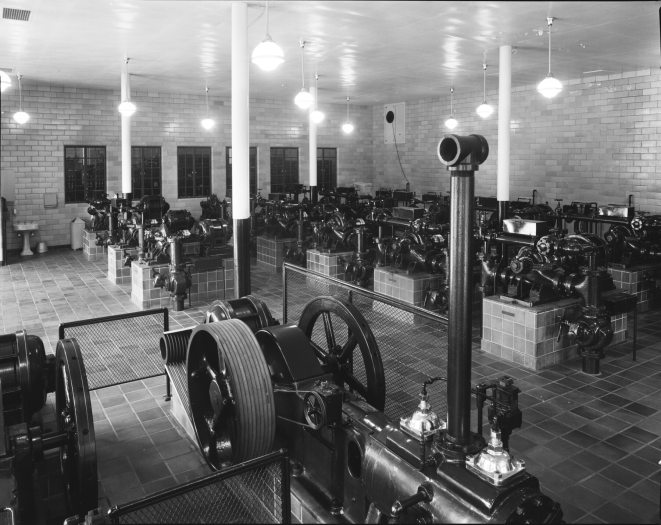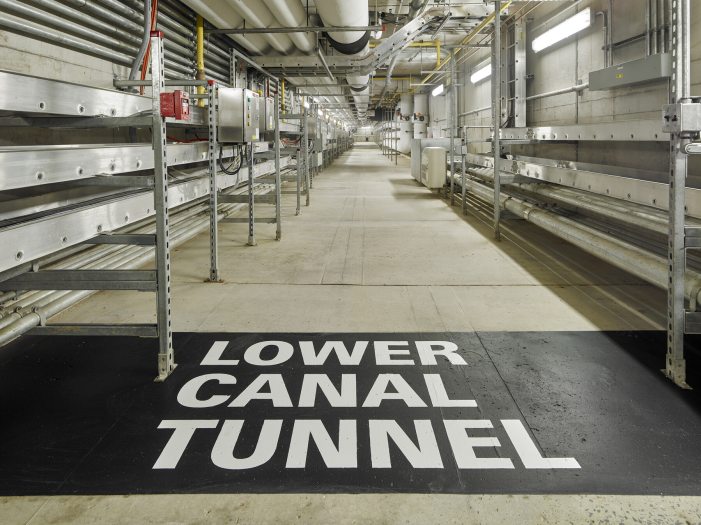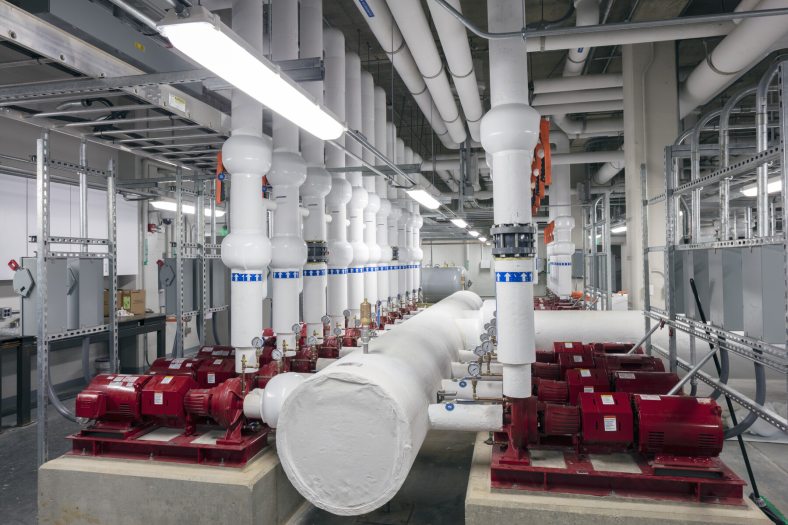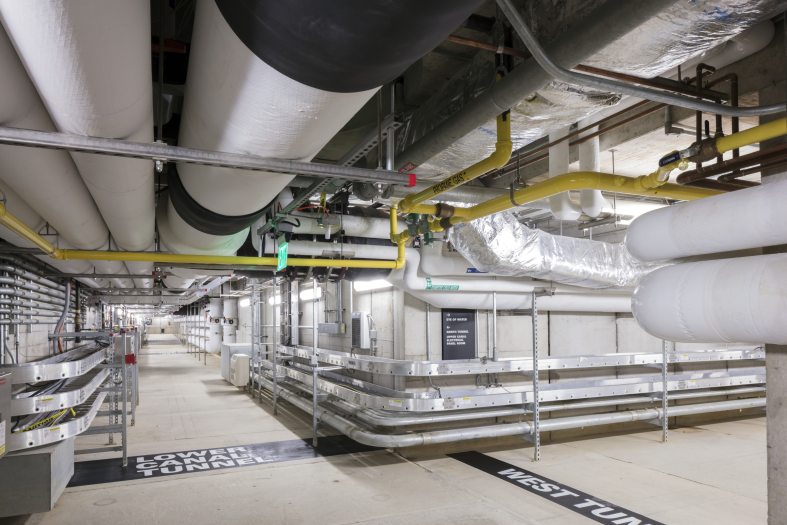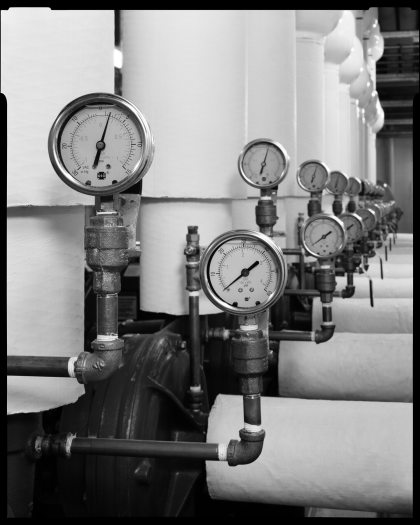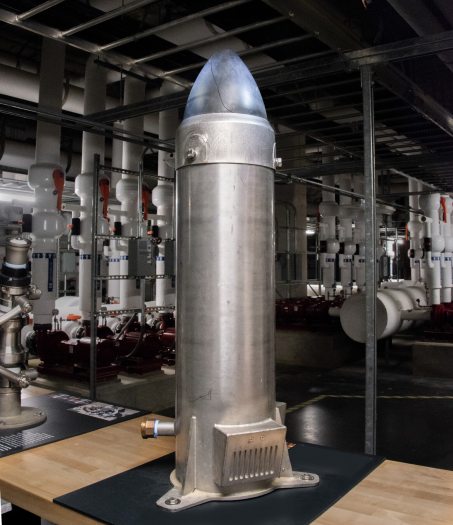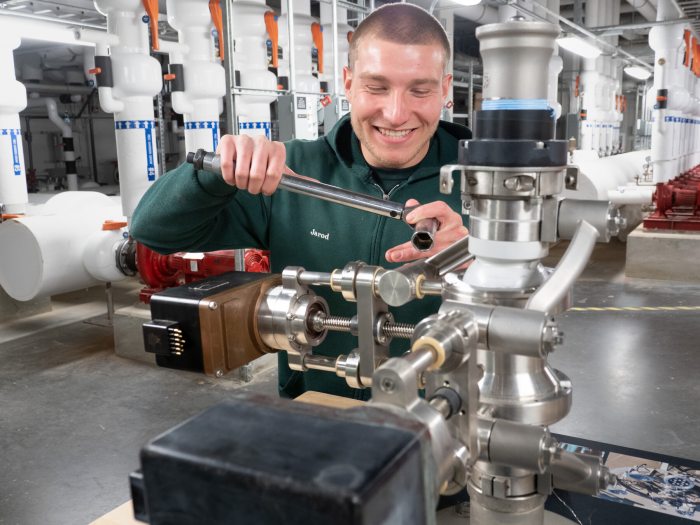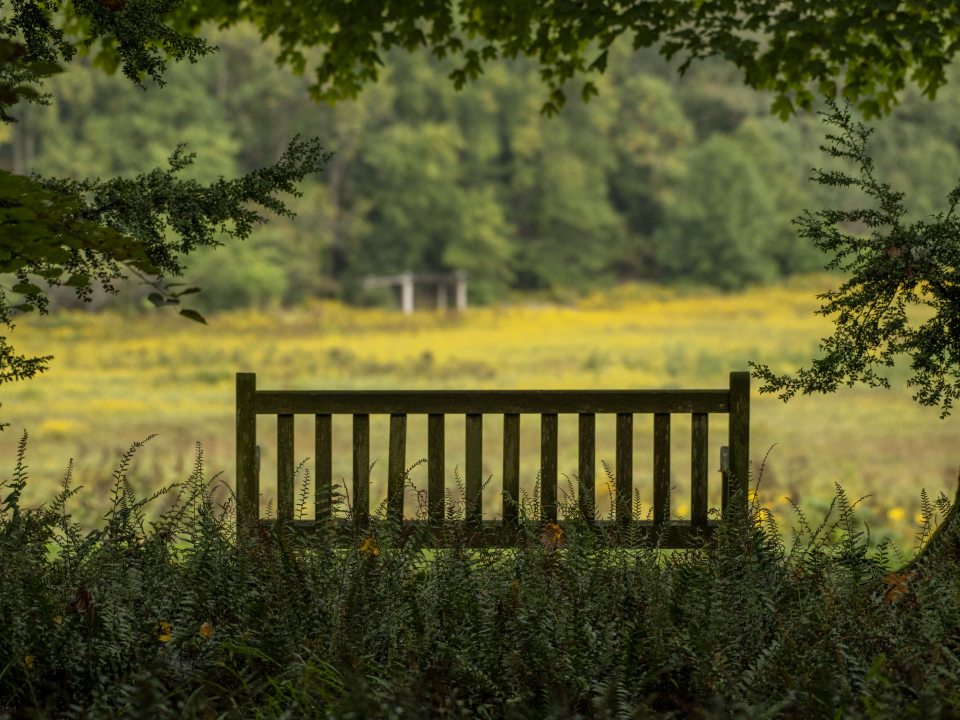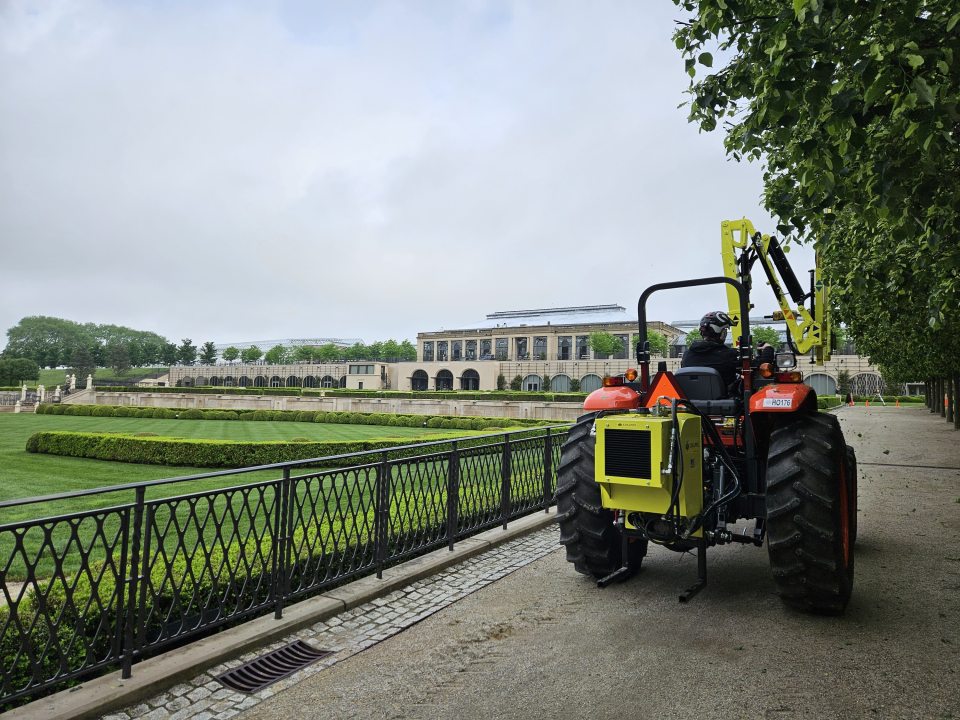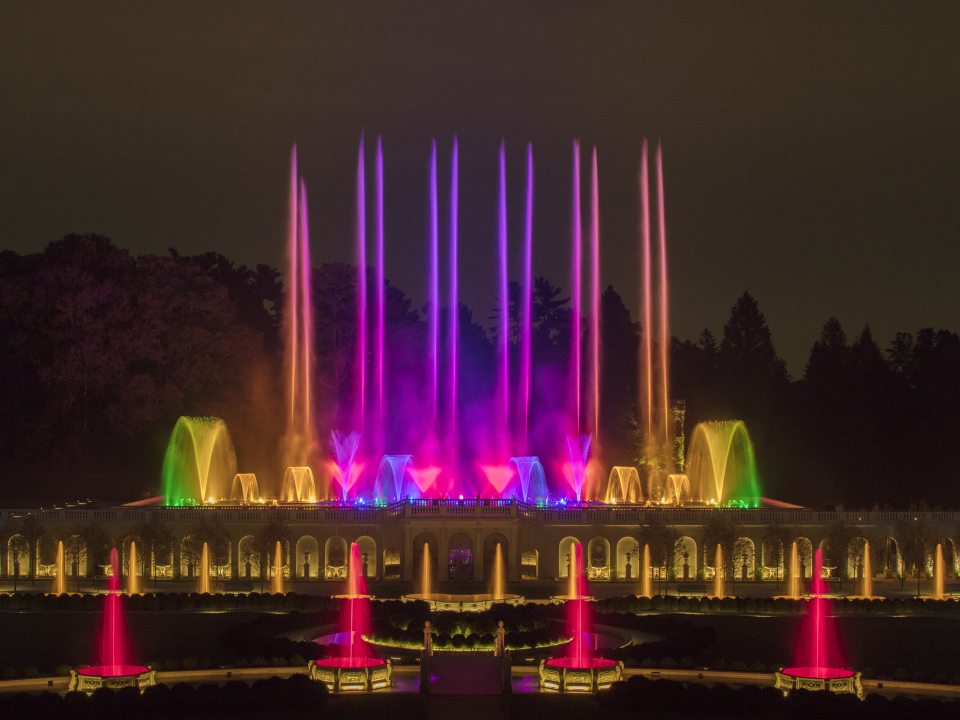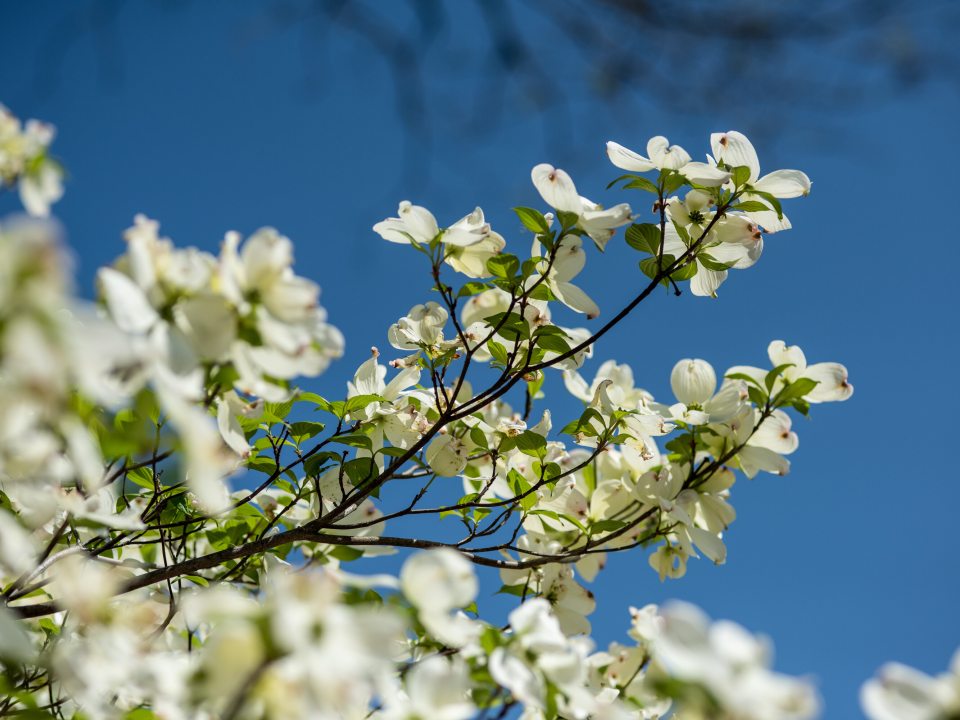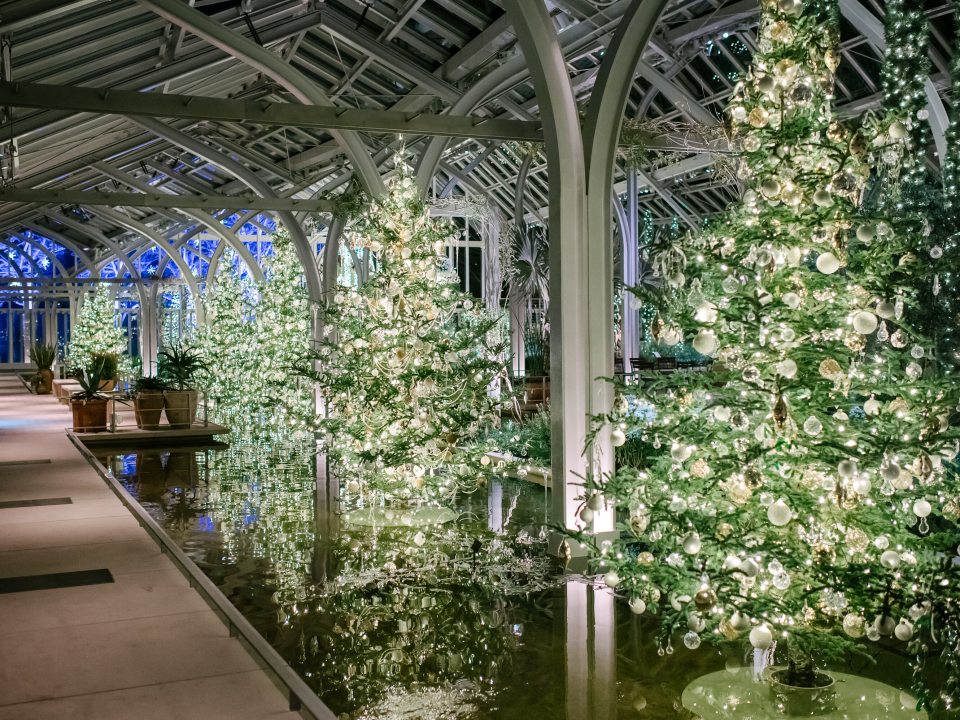The Main Fountain Garden is the culmination of the legacy and vision of our founder Pierre S. du Pont (1870-1954), combining classic garden design with extravagant theater, astounding choreography, a spectrum of color, musical accompaniment, and, on special occasions, fireworks! As the water rises and falls, dances and sways, you might feel as though an impressionist painting has come to life. European-inspired architecture and hand-carved Italianate limestone stonework and sculptures provide an impressive structure to this unforgettable, world-class formal garden.
About This Garden
The Main Fountain Garden has been mesmerizing our guests for more than 90 years. Neoclassical terraces and fountains capture the spirit of Pierre’s vision for beauty, grandeur, and showmanship. Expertly clipped boxwood hedges frame the fountains and architecture, highlighting the symmetry and flow of the space, while lush lawns and Italianate limestone sculptures add depth to the view. Reflecting the French Baroque inspirations of Pierre’s original design, hand-pruned allées of littleleaf linden trees provide a pristine canopy for strolling (and cooling off) on warmer days. Especially refreshing at any time of year is the Grotto, added during our award-winning restoration of the garden in 2017. Concealed behind the Loggia, it adds an element of surprise and discovery, transporting visitors to an otherworldly moment of peaceful contemplation.
The Main Fountain Garden’s original fountains were in use from 1931 until the kickoff of our expansive renovation in 2014. At that time, we implemented brand-new infrastructure housed mostly underground, featuring 1,400 feet of tunnels that include state-of-the-art mechanical systems that run the hydraulic operations, geothermal wells, multiple separate reservoirs, and 5 miles of pipes that support 35,000 gallons of water that courses through them daily.
Longwood Gardens has always been a place devoted to shared memories and togetherness. Providing an unequaled guest experience is at the forefront of our mission—along with thoughtful and innovative stewardship of the land, our buildings, and our commitment to so many of the garden’s original, historic elements. For us, the Main Fountain Garden represents the epitome of why we are here: the celebration of beauty, in all its lasting and evolving forms.
Please note: The water features of this garden can be enjoyed from mid-April until late October. The Grotto water features continue to run year-round, weather permitting.
